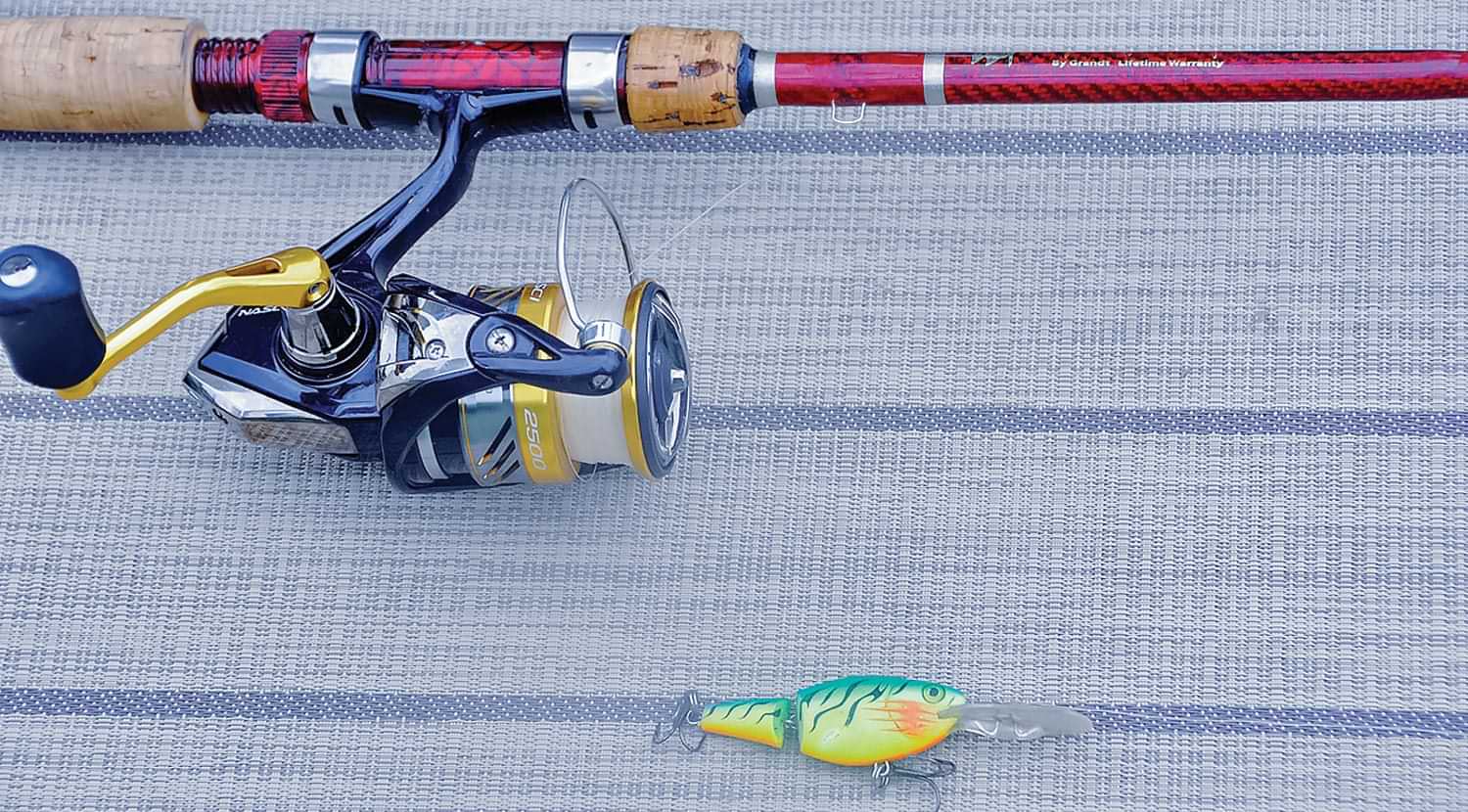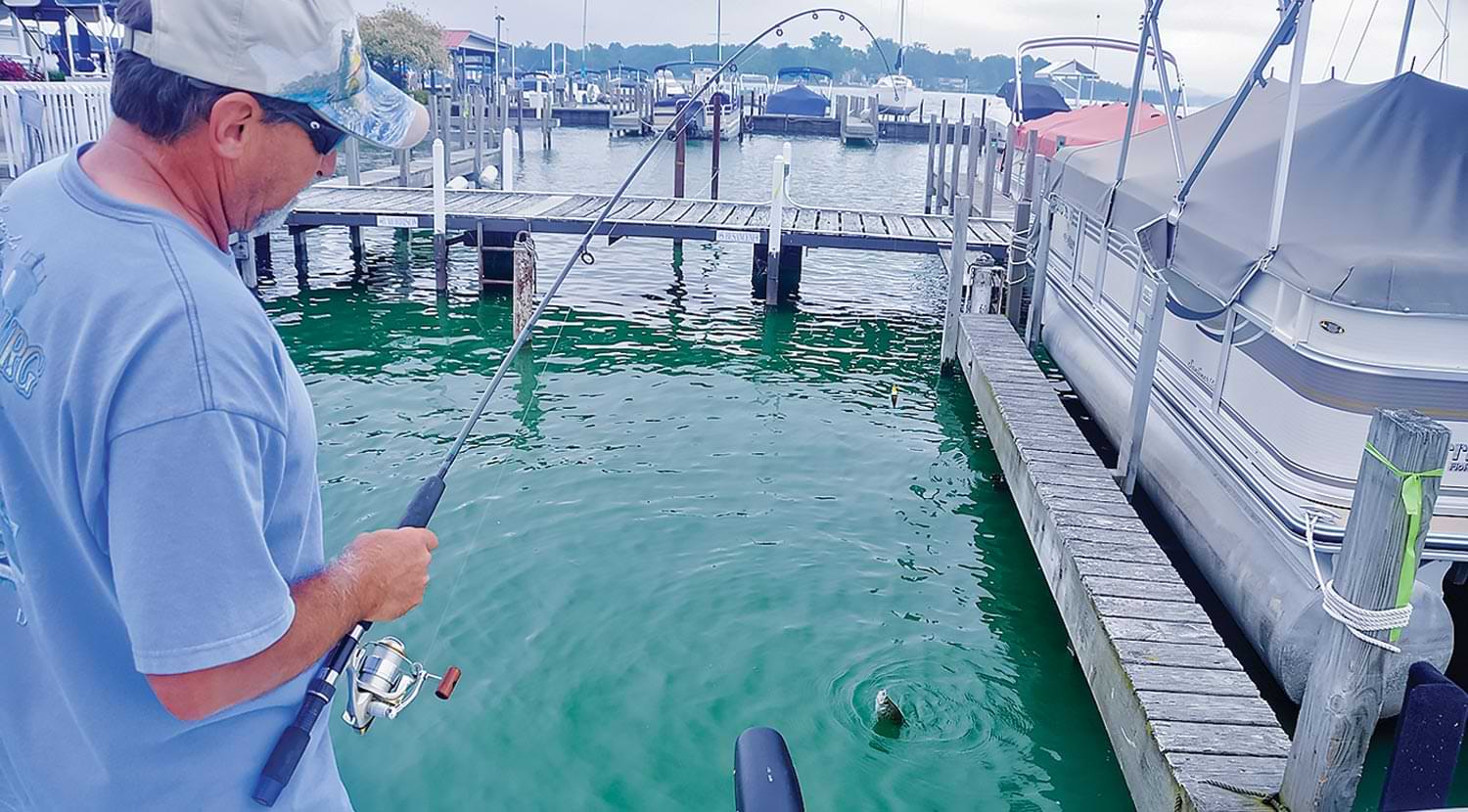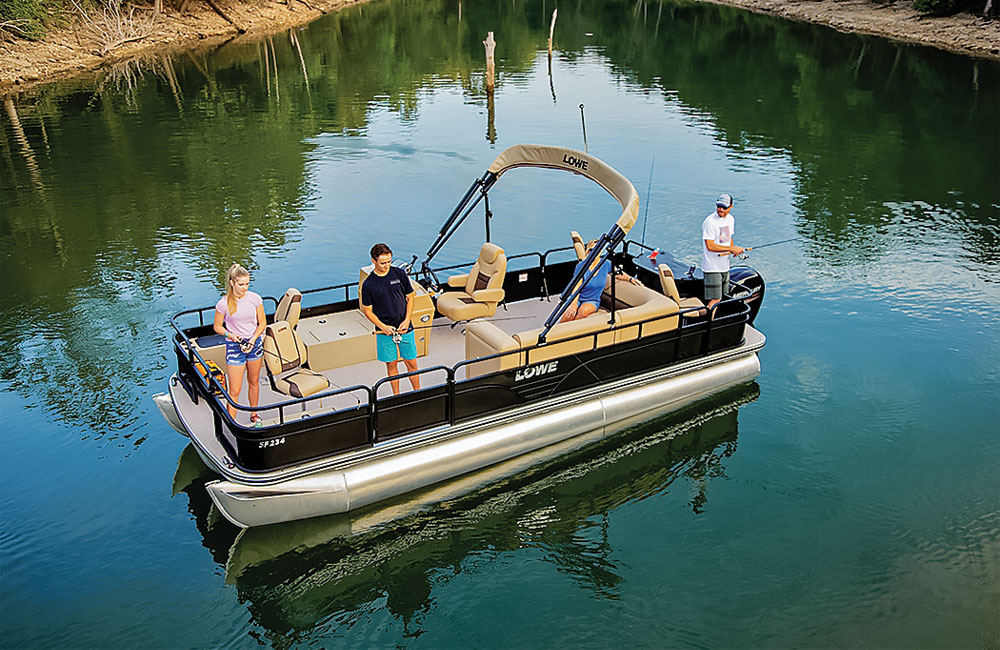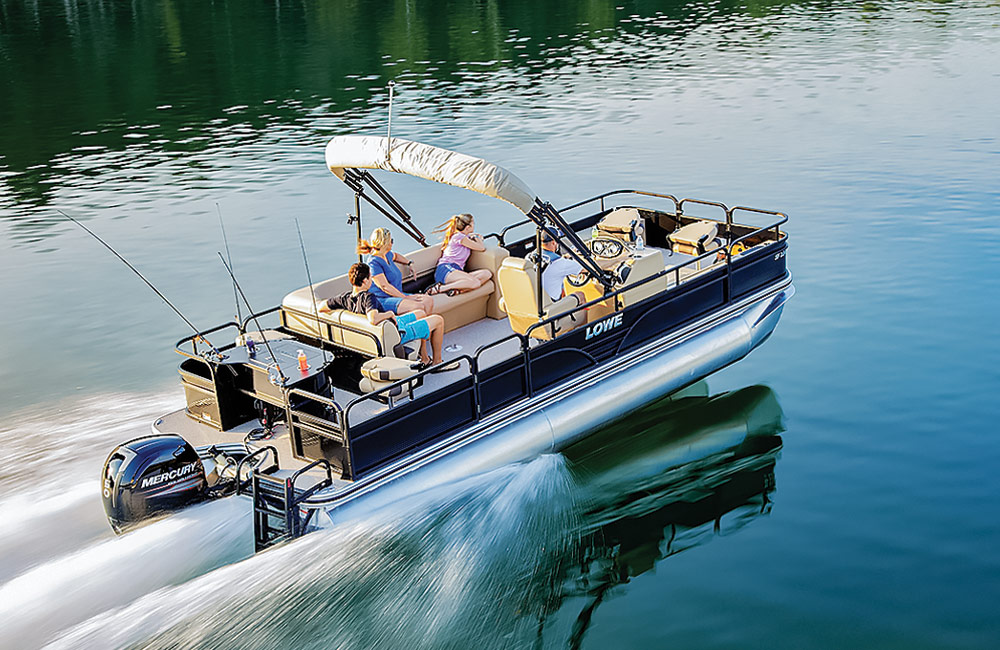King Crappie
Soft plastic baits come into their own as crappie-catchers after the spawn when the fish begin to disperse from the shallows.
By Dan Armitage
mong my favorite rites of spring is the first push of crappies into the shallows of my local lakes. Overshadowing morel ‘shrooms emerging, dogwoods budding and turkeys gobbling, the first catch of crappies tells me the fishing season is underway.
Depending upon your latitude, about this time each year panfish such as crappies, perch and sunfish emerge from winter depths heading toward staging areas just off the shallow cover and structure where they will spawn. Fortunately for opportunistic anglers such as me, each of the popular panfish species follows its own biological calendar that determines the timing of the spawning move, and with few overlaps. In most systems, the crappies begin the panfish show, followed by sunfish and perch.
Determined by air temperature, that of the water it affects is the key to everything that crappies—and other fish—do each spring. As dark, mud-bottom bays, rip-rap shorelines and docks made of wood or concrete absorb and release solar heat from the sun, crappies across their significant range await water temps to reach the mid-40s to make their move into the shallows, often congregating in these first-to-warm water pockets. That said, spring offers a rollercoaster of conditions affecting crappies and their movements. But once the water temperature approaches 50 degrees and stabilizes a bit, the crappie will be found shallow and the catching gets into full gear.
Prior to that point, when warm waters are few and far between in the early season, shorelines and dark bottom shallows that are just a few degrees warmer are crappie magnets. Coves and bays on the north side of a lake, where they receive the bulk of the spring sunlight, are a good place to start looking for early season crappies. And don’t hesitate to fish as shallow as a foot deep, especially in roiled, early season waters. As water temps rise into the 50’s, crappies will remain shallow to feed on baitfish and other forms of emerging aquatic life drawn to the warm water heated by sunny afternoons and fall easy prey to anglers dunking live minnows and other crappie baits.
Coming out of winter, crappie-holding locations can be tough to pin down, and while bobber-fishing is simply too slow a search process for many anglers, early season crappies will rarely chase to eat moving baits presented on the edges. That’s when fishing live minnows or grubs under a float makes sense.

The author’s go-to, post-spawn crappie trolling rig couldn’t be simpler: 8-pound test fluorocarbon line towing a jointed, deep-diving crankbait at 1.5-2 mph.

Crappies will start paying attention to artificials such as small jig-and-twister combos, as the waters warm. As water temperatures top the 60-degree mark and the spawn dwindles and fish start to move off the brush and scatter, the crappies get more active and will chase artificials. That’s good, because at that point, you’re looking to cover water with swimming presentations.
My go-to rig to locate schools of active, offshore crappie once the spawn ends is a spinning reel spooled with eight-pound test fluorocarbon line and small jointed crankbaits that resemble the forage fish in the waters I am targeting. Trolled 125 feet behind my deck boat at speeds less than 2 mph using a bow-mounted trolling motor, this search rig has put me on lots of spring and summer crappies. Often I’ll stop and drift and cast or even anchor if the school appears active enough and the fish large enough to warrant stopping. But often I’ll just note the particulars of the scenario, such as water depth, fish depth and trolling speed, and keep going, searching for similar situations.
While I enjoy trolling and the coverage it offers, nothing matches the thrill of that first stick bobber bouncing and disappearing into the depths as the first crappie of the season swims off with my minnow.



Lowe Sport Fish 234
It’s obvious the moment you step on board that the layout of Lowe’s SF234 is optimized for angling, with a large, wide-open bow with two fishing seats plus tackle and gear storage. In the middle of the boat, there’s a well-appointed console with a captain’s chair, and a cushioned lounge with storage beneath. At the stern, two more fishing chairs plus a livewell and worktable round out the features. At the bow is a 13-gallon aerated livewell and a rod locker with built-in tackle box, battery storage and wiring for a 12-volt trolling motor. All this makes for an excellent early-season—all-season—crappie-fishing platform.
What’s more, Lowe pontoons are built using full-length keels and heavy-duty, edge-to-edge cross members, and Lowe provides a limited lifetime warranty on hulls and plywood decking as well as a 3-year limited warranty on components, and is transferable to a second owner. So if your fishing buddy falls in love with your Lowe and simply must have it, you can pass along the peace of mind with the bill of sale.